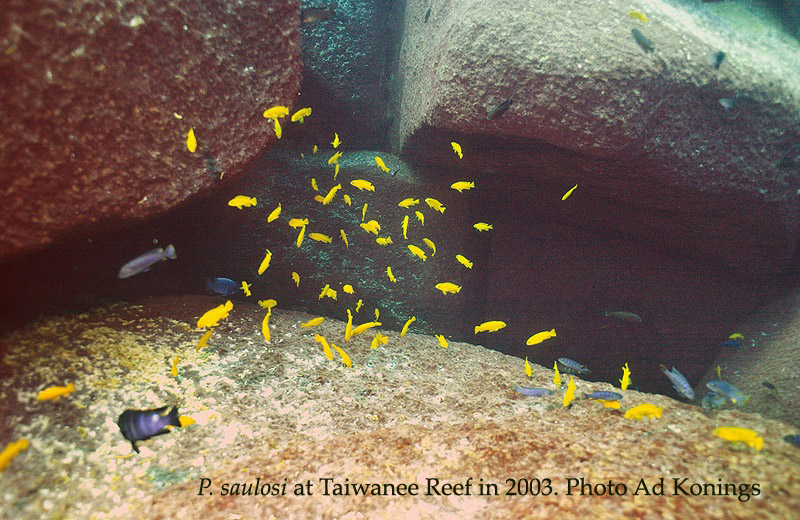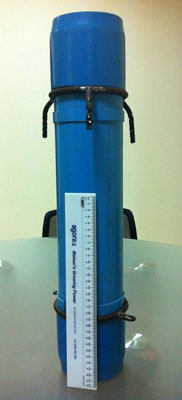| Dear defender of Malawi cichlids!
Critics of CARES and of any other captive breeding programs uphold the notion that a species’ genetic diversity is quickly lost because of inbreeding and can never replace the lost diversity of the original population, and also that reintroduction of captive-raised fish into the original habitat has never been achieved successfully. Well, the last statement is incorrect as successful fish reintroductions have been completed in Europe as well as in the US. I’m not aware of any such efforts with cichlids but I don’t see any problem in that. The fact that wild caught cichlids can quickly adapt to the artificial environment of aquaria, the reverse should pose no problem either. We have, unfortunately, proof of the cichlids’ ability to introduction in Lake Malawi (and also in Lake Tanganyika) where over the years cichlids have been introduced at various places by collectors of ornamental fish. Many rock-dwelling cichlids stay their entire lives within hundred meters of their place of birth and in principle form relatively small breeding groups within the population. The genetic diversity of such local groups is not necessarily larger than that of a captive breeding group. For several of the species kept in captive breeding programs their genetic diversity is millions of times higher than that of their wild counterparts because there are no wild counterparts; these species are extinct in the wild! Reintroduction may not copy exactly the genetic makeup of the original population, but it is a lot closer to the real thing than no fish at all. We have a chance to prove that this works and we may even be able to involve Malawian students in the project. Along with the tremendous over-fishing and species loss that is taking place in Lake Malawi, the demise of a few cichlid species is to blame to unscrupulous collectors; case in point: Pseudotropheus saulosi. This species is endemic to Taiwanee Reef which is a large reef, but most of it is in water deeper than 80 meters. The area where P. saulosi lives, where they find the algae they feed on, is rather small, like the size of a quarter football field. It doesn’t need a lot of imagination to see that the population of any endemic cichlid at the reef is vulnerable to over-fishing. Till about ten years ago P. saulosi occurred in sometimes large schools of hundreds of individuals that wandered through the habitat foraging from the biocover on the rocks.  During the last decade several collectors of ornamental fish have concentrated on catching large numbers of P. saulosi and as a result the species is becoming scarce. When I visited the reef in August 2010 there were only a few specimens to be seen. The large boulders you see in the video clip below used to be covered with hundreds of P. saulosi but in 2010 there were only three individuals on this rock and many boulders had none at all. The program I envision should consist of the following stages: 1. Local government should forbid the collection of any rock-dwelling cichlid (P. saulosi and Protomelas sp. ‘steveni taiwan’) at Taiwanee Reef. This does not affect the local fishermen who collect utaka in the area. I also understand that there would hardly be any enforcement possible apart from inspecting what fishes are exported from Malawi. 2. A survey of the extant population of P. saulosi in the upper 20 meters of the reef (they are very rare in deeper areas) should indicate how many can be collected for a captive breeding program. Since I don’t expect a large genetic diversity 25 females would be sufficient to guarantee a say 95% of the existing diversity. 3. A small fin clip of the live fishes (breeders) would be taken (anal fin of females and tip dorsal fin of males) and the DNA analyzed to get an idea of the diversity. The DNA typing can be done abroad. 4. Breeding groups are set up in Malawi to prevent legal problems when importing live fish back into Malawi. 5. After one/two years, reintroductions can take place and monitored every year thereafter. If, however, the fishing ban was effective, the species could have (partly) recovered on their own account and reintroduction would not be necessary. This would be a simple project that shouldn’t cost much money to complete. It would certainly emphasize the importance of the work others do by maintaining endangered species in captivity. In the case of P. saulosi if we wait any longer we may need to reintroduce the aquarium strains. The FOTAS/CARES convention made one thing clear and that is that action is needed now, when there are still opportunities. After all the years we have enjoyed cichlids, Paul Loiselle said it best:
Without your input and generosity many Malawi cichlid species will not be there 20 years from now. Enjoy your
cichlids! |
||

